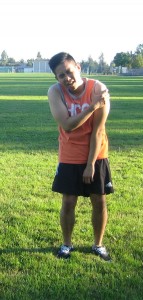For those who play tennis, the usual injury that always comes to mind is tennis elbow. On the other hand, there are also other injuries in the sport that affect other parts of the body including the shoulders. If the individual experiences twinges of shoulder pain after playing tennis that develops over time, it might be an indication that there is a serious condition developing. It is necessary to take the appropriate steps to prevent shoulder pain while playing tennis that does not require being away from the court for extended periods of time.
Shock and inflammation
The shoulder pain that develops after playing the sport can be mapped out on how the individual performs the overhand swing. Once the individual hits the ball overhead, there is an estimated force that is more than the body weight that shudder the rotator cuff. Although these muscles are in charge of mobilizing the shoulder and arm, the repetitive impact can result to the manifestation of agony and tenderness in the shoulder joint.

Muscular imbalance
It is important to note that the strokes in tennis work the front part of the shoulder but does not necessarily target the rear part of the shoulder, thus further complicating the shoulder pain.
The muscle imbalance can trigger increased shoulder pain with every ensuing tennis session. Always bear in mind that the movement of the rotator cuff in tennis is similar to the brakes of the shoulder. Once a ball is struck overhanded and the rotator cuff muscles are not fully developed, it is similar to full acceleration without any breaks.
When to seek medical care
Oftentimes, the shoulder pain that manifests after playing tennis subsides after resting for a day along with cold therapy. Nevertheless, the shoulder pain might be an indication of a serious condition once it starts to worsen over time or noticeable the night after practice.
Dead-arm syndrome is another tennis-related shoulder injury in which the arm is difficult to move or lift. Take note that these symptoms might indicate that the shoulder injury progressed beyond the momentary pain and developed into a injury involving the rotator cuff such as torn cuff or impingement.
Importance of rotator cuff targeting
If the individual experiences the initial signs of shoulder pain while playing tennis, it is best to perform exercises that focus on strengthening the rotator cuff muscles. Many tennis players integrate the rotator cuff training in their toning routines such as grasping a resistance band with the palms face up while the lower and upper arm at 90 degrees with the elbows tucked inwards the torso. Additionally, pulling the wrists away from each other can also target the rotator cuff muscles.
